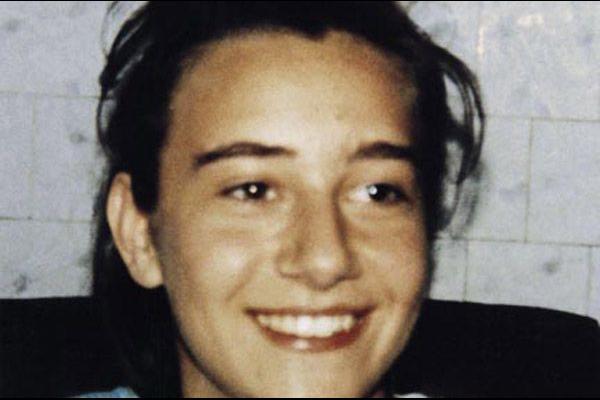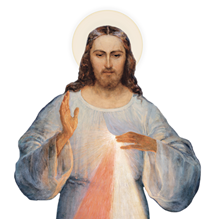
I remember a term we used for ourselves as teenagers: SKOTIEs. That stood for "spoiled kids of the eighties." It was a time known for a more self-centered approach to life, a time when schools were still safe generally (hardly any shootings, except in tough urban areas) and a time when technology was starting to change our habits (video games and primitive home computers). It was a time when dissent from at least a few Catholic teachings was just par for the course, and a time when vocations were tanking.
It was probably not all that different in Sassello, Italy, during the 1980s, but one big difference can be stated. In this little village, a teenage girl dying of bone cancer was growing in sanctity to the point that everyone around her noticed it. When she died on October 7, 1990, around 2,000 people attended the funeral. Many were touched by her holy desires to please God and the joy she would radiate in her last years. She saw the new situation of suffering leading to "a wonderful plan which is little by little revealing itself to me" (from her diary).
The plan is now revealing itself to us, because on Sept. 25, 2010, this girl will be proclaimed "Blessed" by the Catholic Church.
I plan on being there for this event, and my main reason is that Chiara Luce Badano - the girl mentioned - was born on October 29, 1971. She was one class behind me in school. She was, and is, a peer. I would not have guessed that someone from my generation, and someone rather close to my age, would be raised to the honors of the altar this soon. There will be chapels and eventually churches named after her. She will be remembered not as someone to pray for, but someone to pray to.
Vatican II talked about the universal call to holiness, but the post-Vatican II world seemed to me to be a universal call to ignore the teaching authority of the Church. Theologians flexed their intellectual muscles to find ways of making the conscience equal to, and an even greater authority than, "the old men in Rome." Holiness, for them, involved following one's conscience even when it went against the age-old teachings of the Church. It was a do-it-yourself approach to finding God. Its fruits were not just rotten. They were more like nuclear waste.
Chiara's parents were a bit older, married in 1960. They were probably not up to speed with the new trends. They wanted a child, but for 11 years they were unable to conceive. Finally, after much prayer, and in particular after the father prayed at a local shrine dedicated to Our Lady of the Rocche, Chiara came along. She was to be their only child.
They became involved with a movement called Focolare. In 1981, the parents and Chiara attended a big event in Rome called Familyfest. This had a major impact on Chiara. She wanted to commit herself to the Gospel whole-heartedly - to live it in a radical way. She started to focus on loving those around her with the love of Christ. She starts to do little acts of self-denial. She wrote such things in her diary as: "One of my classmates has chicken pox and everyone is afraid to go visit her. My parents have agreed that it's okay if I bring her her homework, so she won't feel alone. I think that love is more important than fear."
It many ways she was a typical teenage girl. She experienced tension with her parents. For instance, they had to work out a compromise on how late she could stay out. She had a wide circle of friends and liked to spend the evening with her friends in coffee shops. She was involved in various sports, such as tennis and swimming. She liked to sing and dance and was considering a possible career as a flight attendant. She didn't always get perfect marks. She even failed math once.
However, her typical teenage life changed when, one day while playing tennis, she experience a sharp pain in her left shoulder. It turned out to be bone cancer. She spent some time alone in her room and essentially abandoned herself to divine providence. She wrote "The illness arrived just at the right moment because I was going in the wrong direction" and saw it as improving her relationship with God. As the painful treatments were applied, she offered all her pain up without hesitation. She would say, "It's for you, Jesus; if You want it, I want it too." This was said, no doubt, in the sense of being a victim soul and sharing in the sufferings of Christ. She focused on Jesus Forsaken - a way of looking at Christ that is promoted in the Focolare movement. She focused on consoling Jesus.
Her doctor was an atheist who was very critical of the Church. However, he was impacted by her witness. He said that because of her he found consistency in the Christian message. "Everything about Christianity makes sense to me."
Her illness lasted three years, but she remained cheerful through it all. She wrote the following to Chiara Lubich, foundress of the Focolare movement, in July of 1990: "Medicine has laid down its arms. Since we stopped the treatment, the pain in my back has increased. But it's my Spouse who is coming to see me. I repeat with you, 'If You want it, I want it too.'"
As her suffering increased, she refused morphine saying "It reduces my lucidity, and there's only one thing I can do now: to offer my suffering to Jesus because I want to share as much as possible in His suffering on the cross."
Her last words were, "Be happy, because I am."
She died on Oct. 7, 1990. The funeral was celebrated by her bishop, and in less than 10 years he started the process toward her beatification. The process went quite well, and in 2008 she was declared a Venerable Servant of God. Now only a miracle was needed for the next step.
In 2001 a young boy in Italy contracted a severe case of meningitis. He was near death. His organs started shutting down - five vital organs were compromised. The doctor gave him 48 hours to live. An uncle of the boy suggested asking the help of Chiara. After a night of prayer, the boy began to improve. His cure was examined and declared outside the realm of natural causes.
In December of 2009, Pope Benedict XVI approved the miracle. The stage was set for her beatification.
I invite anyone - particularly those from Generation X - to join me on a pilgrimage to Rome from Sept. 20-28. The pilgrimage is being organized by 206 Tours. Sign up by logging on to pilgrimages.com/chiara
During this pilgrimage we will attend the beatification of the example of sanctity from Generation X. I also invite you to learn more about her through the Internet. There are various articles in English about her that give more detail on her life.
Some quotes from this article are taken from an article in Living City Magazine - March 2010 issue pp 6-7.
Father John Larson, MIC, serves as the Marians' assistant postulant master in Steubenville, Ohio.

















